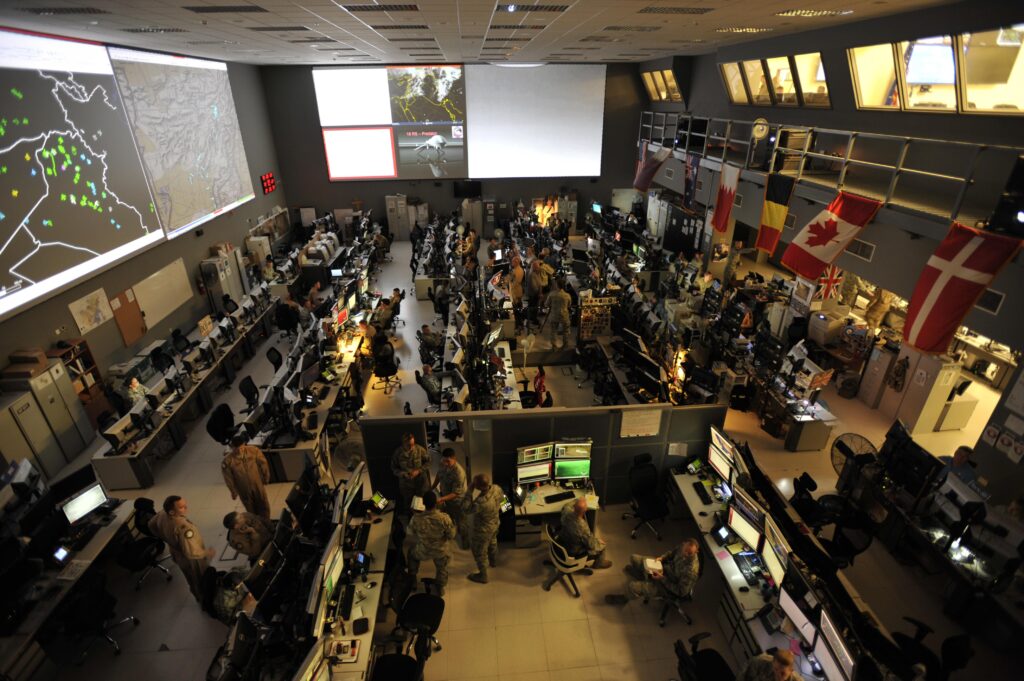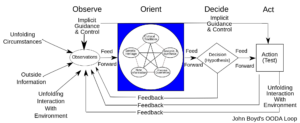ACC Intel Head Seeks Help Creating The ‘Combat Cloud”
Posted on
 ROSSLYN, Va.: Air Combat Command’s intelligence director has her head in a cloud – the Combat Cloud — and she wants the defense industry and academia to join her there.
ROSSLYN, Va.: Air Combat Command’s intelligence director has her head in a cloud – the Combat Cloud — and she wants the defense industry and academia to join her there.
Maj. Gen. VeraLinn “Dash” Jamieson, ACC’s intelligence director, wants industry and academia to help the Air Force figure out how to integrate the data that flows in from various sources of intelligence, surveillance and reconnaissance (ISR) and combine it in a coherent, real time picture for analysts, commanders, and operators. That’s going to require a great deal more automation and synchronization than exists today, she said.
In a paper presented Oct. 22 to the Air Force Association’s Mitchell Forum, Jamieson and Lt. Col. Maurizio “Mo” Calabrese called their concept for turning “big data” into a big picture “Fusion Warfare.” By Fusion Warfare, they mean creating the Combat Cloud by fusing all the intelligence that today is collected by systems that often can’t communicate with one another easily and isn’t automatically combined.
The term Combat Cloud describes the universe of information that could be available from sensors that today are largely “stovepiped” and require time-consuming and error-prone human intervention to share what they collect. Data floods in from fifth generation warplanes such as the F-22 and the F-35; satellites; ISR aircraft both manned (U-2) and unmanned (MQ-1 Predator, MQ-9 Reaper, RQ-4 Global Hawk); plus from cyber and other sources on the ground. But it can’t be made sense of or combined without cumbersome and time-consuming processing, exploitation and dissemination, known in the military as PED.
The goal of Fusion Warfare, they said, is to produce a comprehensive picture of the battlespace in real time so U.S. leaders can stay inside any adversary’s OODA Loop (an acronym for Observe, Orient, Decide, Act) coined by the late Air Force Col. John Boyd to describe the cycle adversaries go through in a conflict.  Today, said Jamieson, “fusion is an intensive man-in-the-loop operation.” Fusion Warfare would link and synchronize those sources, “harnessing all data, using it together, making it discoverable to all in what we refer to as the Combat Cloud.”
Today, said Jamieson, “fusion is an intensive man-in-the-loop operation.” Fusion Warfare would link and synchronize those sources, “harnessing all data, using it together, making it discoverable to all in what we refer to as the Combat Cloud.”
Being able to do that will be increasingly important as potential adversaries catch up to or even surpass U.S. military technology, Jamieson warned. She cited 5th generation fighter aircraft, medium- and long-range surface to air missiles, space and cyber weapons and advanced cruise missiles as threats potential foes already possess. But the technical challenge of creating the Combat Cloud is formidable.
“How do we take the information and visually display it to decision makers, to operational folks who are executing missions, and those who are setting analyses for follow-on missions?” she said. “That is something we look at industry and academia to help us develop — help us look at the crush of data that we know is coming.”
Steve Burke of Textron asked Jamieson: “How do we give you our ideas without exposing our intellectual property to our competitors?”
Jamieson said the Air Force is planning on “hosting industry days so you can come and open a dialogue.” Such conversations, presumably, won’t be shared on the cloud.
Subscribe to our newsletter
Promotions, new products and sales. Directly to your inbox.
